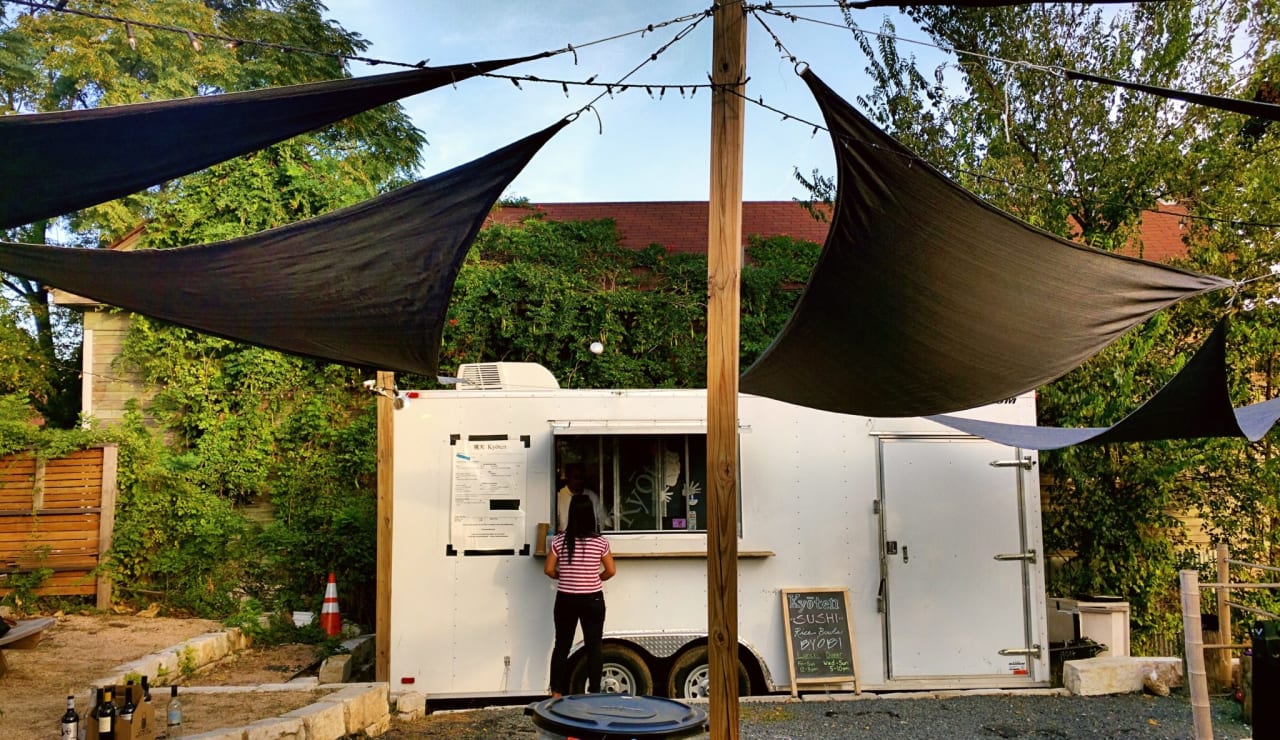Walkable neighborhoods require the obvious (updated sidewalks) along with the not-so-obvious (street-side cafes) in order to make them both efficient and pedestrian-friendly. While Austin hasn’t quite reached the status of New York City or San Francisco as far as a “walk score” is concerned, we’re doing pretty well for a Texas town.
According to WalkScore.com, walkable neighborhoods has seven main components:
- A center: Walkable neighborhoods have a center, whether it’s a public main street or a public space.
- People: Enough people for businesses to flourish and for public transit to run frequently.
- Mixed income, mixed use: Affordable housing located near businesses.
- Parks and public space: Plenty of public places to gather and play.
- Pedestrian design: Buildings are close to the street while parking lots are relegated to the back.
- Schools and workplaces: Close enough that most residents can walk from their homes.
- Complete streets: Streets designed for bicyclists, pedestrians and transit.
Downtown Austin scores the highest among walkable neighborhoods with an impressive 90 out of 100, but we’ve uncovered some areas that are giving the 78701 a run for its money. The neighborhoods listed below may not come out on top in a particular website’s algorithm, but we know Austin and it’s worth lacing up your sneakers to take a stroll around these ‘hoods.
The 78704
As a whole the “hipster” 78704 zip code doesn’t fare well on the scale of walkability, scoring only 57 out of 100, but there are pockets of the 78704 that are a walker’s dream (especially on the weekends when parking in this area can be a nightmare). In the area south of Oltorf between South 5th Street and South Congress you’ll find a foodie’s paradise. Everything from gourmet donuts to delicious Thai—and margaritas on practically every street corner—is found on this little stretch of real estate.

East v. West
It’s often hard to distinguish the hip from the hipper in Austin, but Central East Austin has been gaining buzz not only for the uber-cool restaurants and bars taking hold of East 6th Street but also as a biker’s paradise by day. By night, this is the place to be when the streets come alive with excitement.
When you’re in the mood for something quieter, on the west side of Austin Tarrytown is a perennial walker’s favorite with its wide sidewalks, winding streets and mature trees. You can’t beat the views of Lake Austin, and the chance of running into local celebrities is another draw of this established neighborhood.
Up North
A stroll around the DayGlo-colored buildings of North Loop will take you past vintage stores, record shops and coffee shops that sometimes serve double-duty as bars. It’s one of those neighborhoods keeping the “weird” in the “Keep Austin Weird” mantra.
A little farther north, stepping through the streets of Allandale gives you a sense of community and family. It’s proximity to parks reminiscent of Old Austin add to its walkability.
Nearby—as outposts of popular Austin establishments (El Chilito, Bufalina, Lick) continue to pop up on Burnet Road—neighboring Wooten is upping its walkable status. What was once considered a less-desirable area of town is now making its
move with quiet streets and access to public transportation.
Thanks to the Mueller development, nearby Windsor Park is having its day. This neighborhood, which consists of mostly 1950s-style ranch homes, has pedestrian-friendly, wide, curvy streets and its own branch of the Austin Public Library. Bartholomew Park, with its outdoor barbecue areas and recently refurbished pool, is the anchor of the community and a reason to get out and walk.
The ‘Burbs
Located about 20 minutes from downtown Austin, the master-planned community Circle C boasts some of the city’s best parks and outdoor venues. You won’t find public transportation here, but you will find a lively community with ample green space, a private Olympic-sized swimming pool, soccer fields, a golf course, volleyball courts, a tennis club and basketball court…just to name a few. If that’s not enough to convince you to put on your walking shoes, the Lady Bird Johnson Wildflower Center is also located in Circle C with its own hiking trails and rotating outdoor exhibits.
About 20 minutes from downtown in the opposite direction, located in far northwest Austin, you’ll find Avery Ranch—another planned community that is one of Austin’s fastest growing areas. Located between Cedar Park and Round Rock, Avery Ranch has 8.5 miles of trails that connect the two for the hikers and the bikers out there. If you’re looking for something a little slower-paced, the Avery Ranch Golf Club has been named one of the best in Austin.
Not all suburbs boast golf courses, swimming pools and miles of hike and bike trails. Downtown Georgetown, located about 30 minutes north of Austin, is a charming, historic community for those looking for a slower-paced life. The city’s historic district, Georgetown Square or “The Square,” has numerous restaurants, shops and a local winery within walking distance.
